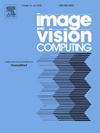EMA-GS: Improving sparse point cloud rendering with EMA gradient and anchor upsampling
IF 4.2
3区 计算机科学
Q2 COMPUTER SCIENCE, ARTIFICIAL INTELLIGENCE
引用次数: 0
Abstract
The 3D Gaussian Splatting (3D-GS) technique combines 3D Gaussian primitives with differentiable rasterization for real-time high-quality novel view synthesis. However, in sparse regions of the initial point cloud, this often results in blurring and needle-like artifacts owing to the inadequacies of the existing densification criterion. To address this, an innovative approach that utilizes the Exponential Moving Average (EMA) of homodirectional positional gradients as the densification criterion is introduced. Additionally, in the early stages of training, anchors are upsampled near representative locations to infill details into the sparse initial point clouds. Testing on challenging datasets such as Mip-NeRF 360, Tanks and Temples, and DeepBlending, the results demonstrate that the proposed method achieves fine detail recovery without redundant Gaussians, exhibiting superior handling of complex scenes with high-quality reconstruction and without requiring excessive storage. The code will be available upon the acceptance of the article.
求助全文
约1分钟内获得全文
求助全文
来源期刊

Image and Vision Computing
工程技术-工程:电子与电气
CiteScore
8.50
自引率
8.50%
发文量
143
审稿时长
7.8 months
期刊介绍:
Image and Vision Computing has as a primary aim the provision of an effective medium of interchange for the results of high quality theoretical and applied research fundamental to all aspects of image interpretation and computer vision. The journal publishes work that proposes new image interpretation and computer vision methodology or addresses the application of such methods to real world scenes. It seeks to strengthen a deeper understanding in the discipline by encouraging the quantitative comparison and performance evaluation of the proposed methodology. The coverage includes: image interpretation, scene modelling, object recognition and tracking, shape analysis, monitoring and surveillance, active vision and robotic systems, SLAM, biologically-inspired computer vision, motion analysis, stereo vision, document image understanding, character and handwritten text recognition, face and gesture recognition, biometrics, vision-based human-computer interaction, human activity and behavior understanding, data fusion from multiple sensor inputs, image databases.
 求助内容:
求助内容: 应助结果提醒方式:
应助结果提醒方式:


